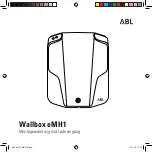
Driving on Snow or Ice
Most of the time, those places where the tires
meet the road probably have good traction.
However, if there is snow or ice between the tires
and the road, you can have a very slippery
situation. You will have a lot less traction, or grip,
and will need to be very careful.
What is the worst time for this? Wet ice. Very cold
snow or ice can be slick and hard to drive on.
But wet ice can be even more trouble because it
may offer the least traction of all. You can get
wet ice when it is about freezing, 32°F (0°C), and
freezing rain begins to fall. Try to avoid driving
on wet ice until salt and sand crews can get there.
Whatever the condition — smooth ice, packed,
blowing, or loose snow — drive with caution.
If you have the Traction Control System (TCS), it
will improve your ability to accelerate when
driving on a slippery road. Even if your vehicle has
TCS you will want to slow down and adjust your
driving to the road conditions. Under certain
conditions, you may want to turn the TCS off, such
as when driving through deep snow and loose
gravel, to help maintain vehicle motion at
lower speeds. See
Traction Control System (TCS)
on page 283
.
If you do not have TCS, accelerate gently. Try not
to break the fragile traction. If you accelerate too
fast, the drive wheels will spin and polish the
surface under the tires even more.
303
Summary of Contents for Lucerne 2007
Page 6: ...These are some examples of symbols that may be found on the vehicle 6 ...
Page 90: ... NOTES 90 ...
Page 154: ... NOTES 154 ...
Page 157: ... NOTES 157 ...
Page 158: ...Instrument Panel Overview 158 ...
Page 336: ...When you open the hood on the 4 6L V8 engine here is what you will see 336 ...
Page 438: ... NOTES 438 ...
Page 454: ...Engine Drive Belt Routing 3 8L V6 Engine 4 6L V8 Engine 454 ...
Page 480: ... NOTES 480 ...
















































